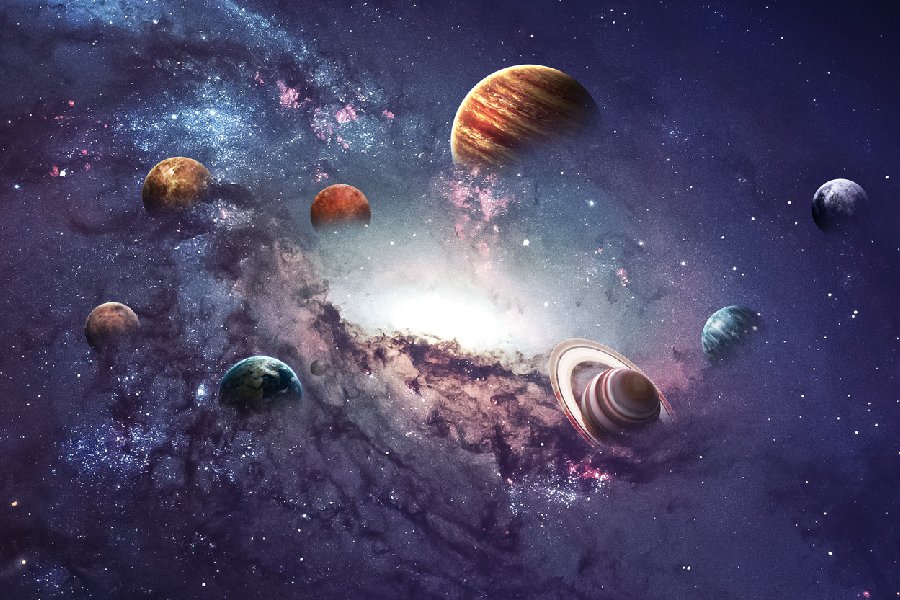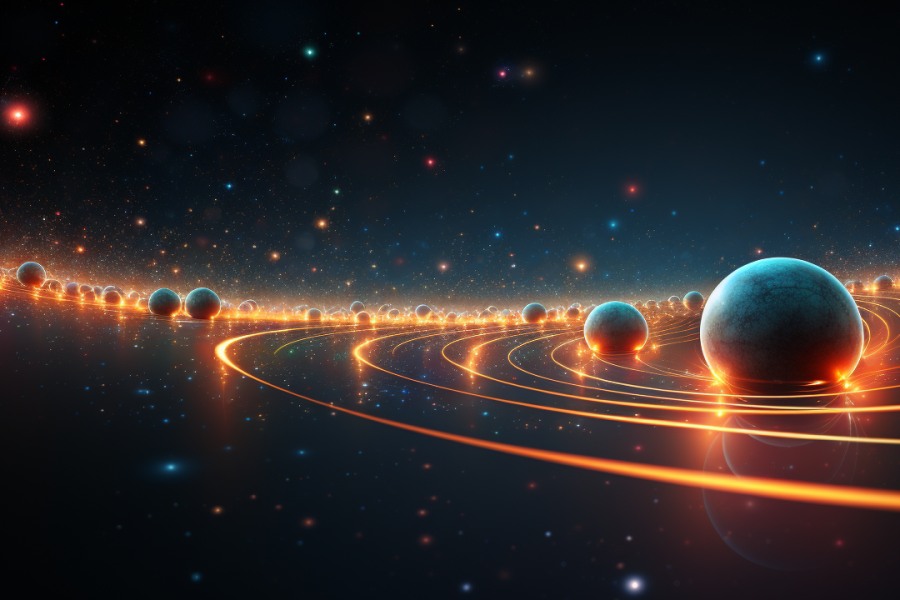From cosmologists to astronomers, the question of our universe’s age remains one of the most puzzling. So, with all our leading-edge technologies today – do we have the answer yet? How old is the universe?
Modern telescopes peer back billions of lightyears, yet our universal calendar still contains unfilled pages. What transpired in those opening chapters? Join a journey of galactic proportion as we explore efforts to establish the age of infinity itself.
Probing the cosmos for clues, astronomers utilize technologies barely envisioned just decades prior. Imprints left in the primordial glow, the motions of ancient structures, and other faint signals from origins remain open to interpretation when estimating a conclusive age.
What events started this cosmic clock? Through advancing science, we assemble pieces of the puzzle provided by light from the youngest regions of space. Join us in this profound quest to comprehend just how old the universe may be according to our latest grasp.

How Old Is the Universe?
So, how old is the universe? The universe, as we currently understand it, is estimated to be around 13.8 billion years old. Scientists arrive at this figure through meticulous observations. These include studying cosmic microwave background radiation and distant galaxies.
Additionally, they involve precise measurements of the current rate of expansion of the universe. By unraveling the mysteries of cosmic evolution, researchers have constructed a detailed timeline, providing a precise age for the universe.
The exploration of the universe’s age not only deepens our understanding of cosmic history but also highlights the remarkable achievements of scientific inquiry, revealing the vastness of time and space in which our existence is embedded.
The nature of our universe
The universe, an awe-inspiring expanse, beckons exploration into its boundless depths. It extends far beyond the reaches of our comprehension, revealing galaxies that sparkle like distant gems. Stars, the cosmic beacons, illuminate the cosmic canvas, while nebulae weave ethereal clouds of interstellar dust, giving birth to new stars.
In this cosmic tapestry, celestial phenomena unfold with mesmerizing grace. Supernovae, colossal explosions that mark the demise of massive stars, radiate brilliance across cosmic landscapes. Black holes, mysterious entities with gravitational prowess, lurk in the cosmic shadows.
Each celestial body and phenomenon contributes to the vast and diverse narrative of the cosmos, inviting humanity to gaze into the profound mysteries of the universe.
The Estimated Age of the Universe
Understanding the universe’s age unlocks the cosmic narrative, revealing the events that shaped our celestial surroundings. It’s like reading a cosmic history book, where each page tells a story of galaxies, stars, and the emergence of life.
Scientists estimate the universe’s age at approximately 13.8 billion years, providing a crucial framework for comprehending cosmic evolution and the formation of celestial wonders. The historical importance of this age goes beyond mere chronology; it’s a key to unraveling the mysteries of our cosmic existence.
The 13.8 billion-year timeline acts as a cosmic compass, guiding us through the epochs of cosmic evolution and the unfolding drama of the universe’s remarkable journey.
Big Bang Theory
The Big Bang theory posits that the universe began as an unimaginably hot and dense point, expanding rapidly to create the vast cosmos we observe today. This transformative theory revolutionized cosmology, offering a coherent explanation for the universe’s origin.
It reshaped our cosmic paradigm, providing a lens through which we understand the grand narrative of the universe – from its dense, hot beginnings to the expansive cosmos. Shaping the universe’s origin, the Big Bang theory stands as a cornerstone in our cosmic understanding.
It is not just a scientific hypothesis. It’s a seismic shift in how we perceive the vastness of the cosmos. The theory’s elegance lies in its simplicity, capturing the essence of the universe’s evolution in a single, profound concept.
Evidence in support of the Big Bang theory
One compelling piece of evidence supporting the Big Bang theory is the cosmic microwave background radiation – a faint glow that permeates the universe. This radiation aligned precisely with predictions of the Big Bang, offering a snapshot of the universe’s early moments.
It serves as a cosmic echo, reverberating the conditions and temperature of the universe during its infancy. Observations of cosmic abundances, known as nucleosynthesis, further corroborate the Big Bang theory.
The abundance of light elements, such as hydrogen and helium, aligns seamlessly with the conditions posited by the theory. These observations and experiments collectively reinforce the theory’s validity, creating a robust foundation for understanding the universe’s inception and evolution.

Expansion of the universe
Concept of universe’s expansion
The universe’s expansion transforms our perception of space. It envisions galaxies moving away, not due to internal motions but as space itself stretches – like an inflating balloon, carrying galaxies on its expanding surface.
This concept emerged through historic discoveries, illustrating the cosmos as a dynamic entity constantly stretching. The universe’s expansion hints at a dynamic cosmic ballet, where celestial bodies are propelled through the vastness.
Astronomers shaping knowledge
Key astronomers like Edwin Hubble played pivotal roles in revealing expansion. Hubble’s observations of galaxies receding, known as Hubble’s law, provided concrete evidence. Georges Lemaître’s hypothesis of an expanding universe predates Hubble’s observations, laying the groundwork.
Astronomers reshaped our cosmic narrative, unveiling a universe in constant motion. These discoveries underscore a dynamic cosmos, constantly evolving through the contributions of visionary astronomers.
Density of matter in the universe
Importance of matter density
Understanding matter density is crucial – akin to deciphering the cosmic recipe. Matter density acts as cosmic glue, holding galaxies together. If too dense, gravity dominates, leading to a collapsed universe; if too sparse, the cosmos expands endlessly.
This delicate balance defines the cosmic structure, governing the dance of galaxies through the vast cosmic web. It’s a cosmic equilibrium shaping the fate of galaxies and the evolution of the universe.
Contributions from modern cosmology
Modern cosmology refines our understanding of matter density. The cosmic web, an intricate network of galaxies, reveals the distribution of matter. These contributions deepen our knowledge of cosmic evolution, exploring the delicate interplay of gravitational forces.
The cosmic dance of creation and expansion relies on understanding the nuances of matter density. Modern theories and technologies bring us closer to unraveling the secrets of cosmic evolution.
Observable universe and beyond
Defining the observable universe
The observable universe is a cosmic snapshot, limited by light’s speed. Peering into the night sky captures distant galaxies’ light – each photon tells a cosmic story. This horizon is a cosmic window, unveiling celestial wonders within our sight.
Beyond a certain distance, light has not yet reached us. The observable universe is a snapshot frozen in time, presenting both the cosmic past and a boundary to our current observational reach.
Universe beyond observational reach
Beyond our reach lies an enigmatic cosmic expanse. This unobservable territory beckons exploration, fueling scientific curiosity. While we peer into the observable universe, unobservable regions remain a cosmic mystery.
The universe beyond our sight is a tantalizing frontier. Scientists contemplate dark matter and dark energy, elusive components that may unlock cosmic mysteries. It’s a quest for new discoveries beyond our current observational horizon.
The edge of the observable universe
Imagining the cosmic edge
Imagine standing at the very edge of the observable universe, where visibility fades, and galaxies become tiny specks, disappearing into cosmic darkness. This imaginary boundary pushes the limits of our understanding of the vastness of the universe.
The edge symbolizes the triumphs and limitations of our observational prowess. It’s a reminder that there’s always more to explore, inviting scientists to push boundaries and unveil new chapters in the cosmic narrative.
Addressing misconceptions
Misconceptions swirl around the edge of the observable universe. It’s crucial to clarify that this edge isn’t a physical barrier but a limit to our observational capabilities. It marks the boundary where distances become too vast for light to reach us within the age of the universe.
By addressing these misconceptions, we refine our understanding, fostering a more accurate appreciation of the observable universe’s edge. It’s a starting point for further exploration, inviting us to probe mysteries beyond our current observational horizon.
Conclusion
Embarking on the cosmic quest of how old is the universe, inspires an imagination-fueled journey through celestial timescapes. More than a mere number, the estimated age of 13.8 billion years represents a profound poetic revelation – our cosmic footprint.
This guidepost anchors an epic narrative that scientists continuously refine. They unravel hidden secrets carried by light from the earliest moments of the universe
As we explore the cosmic tapestry, significance emerges in the ageless beauty that stretches beyond earthly horizons. The universe’s age isn’t just a scientific fact but a key unlocking the grand narrative.
Figuring out the age of the universe gives us a big cosmic milestone to work with. It helps us understand how everything began and evolved over time.
While enigmas persist on first causes, we refine dynamics from technologies peering back in deep time. Advancements may further constrain ranges and queries around this ancient cosmic riddle of eternity’s scope.
